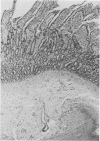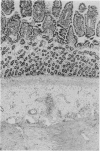Abstract
Small intestinal segmental autografts and allografts in dogs were examined histologically to assess changes associated with the surgical technique, the effect of different luminal perfusates and for evidence of rejection. Some animals were immunosuppressed with Cyclosporin A. Specimens for examination were obtained by biopsy at regular intervals after transplantation, at death or when killed. Typical vascular changes of rejection were identified only within some allografts and in others the cause of graft failure remains conjectural. When there was rejection characteristic lesions were confined to the submucosa and muscle coats while changes in the mucosa were similar to those in the autografts. These mucosal features were affected by the nature of the perfusate and often appeared transiently after grafting. Mucosal biopsy as a way of monitoring intestinal allograft rejection neither reveals a sequential pattern of changes, nor provides a reliable method of recognition of the reaction. In contrast full thickness biopsies of the intestinal wall do appear to fulfil both of these requirements.
Full text
PDF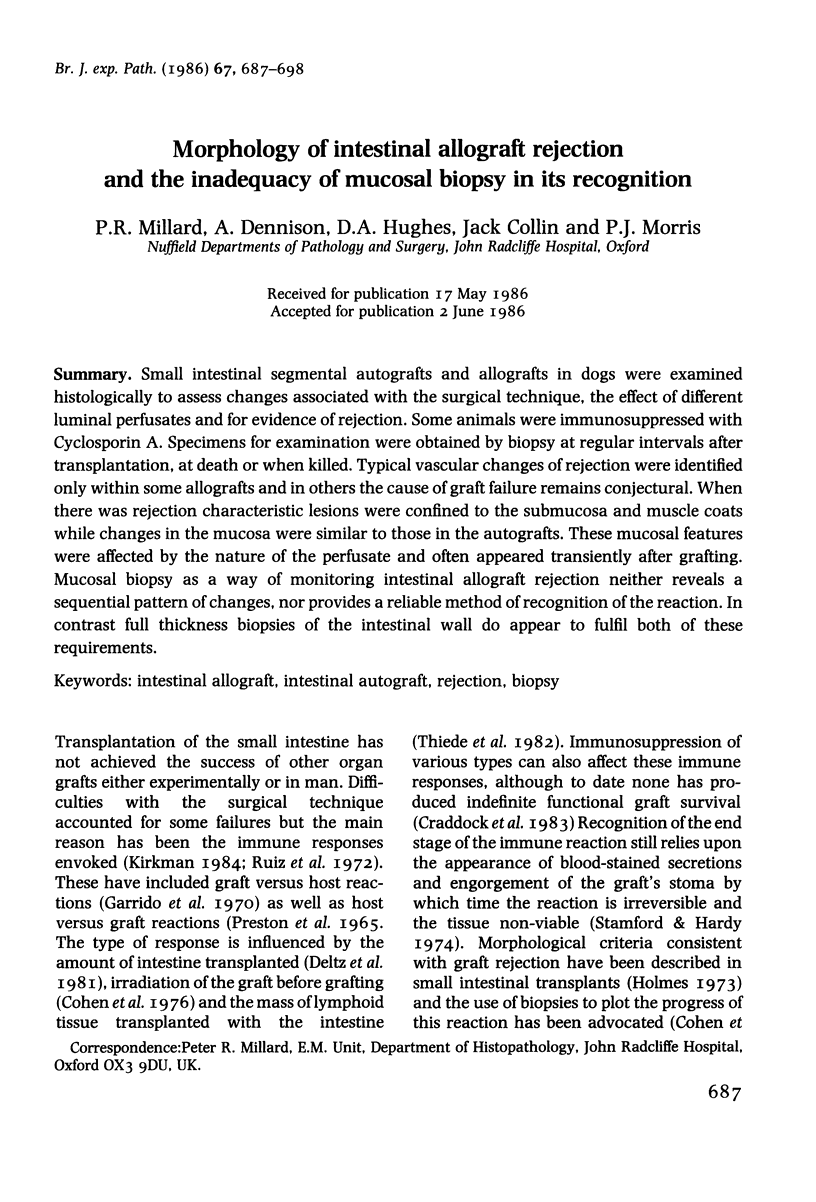
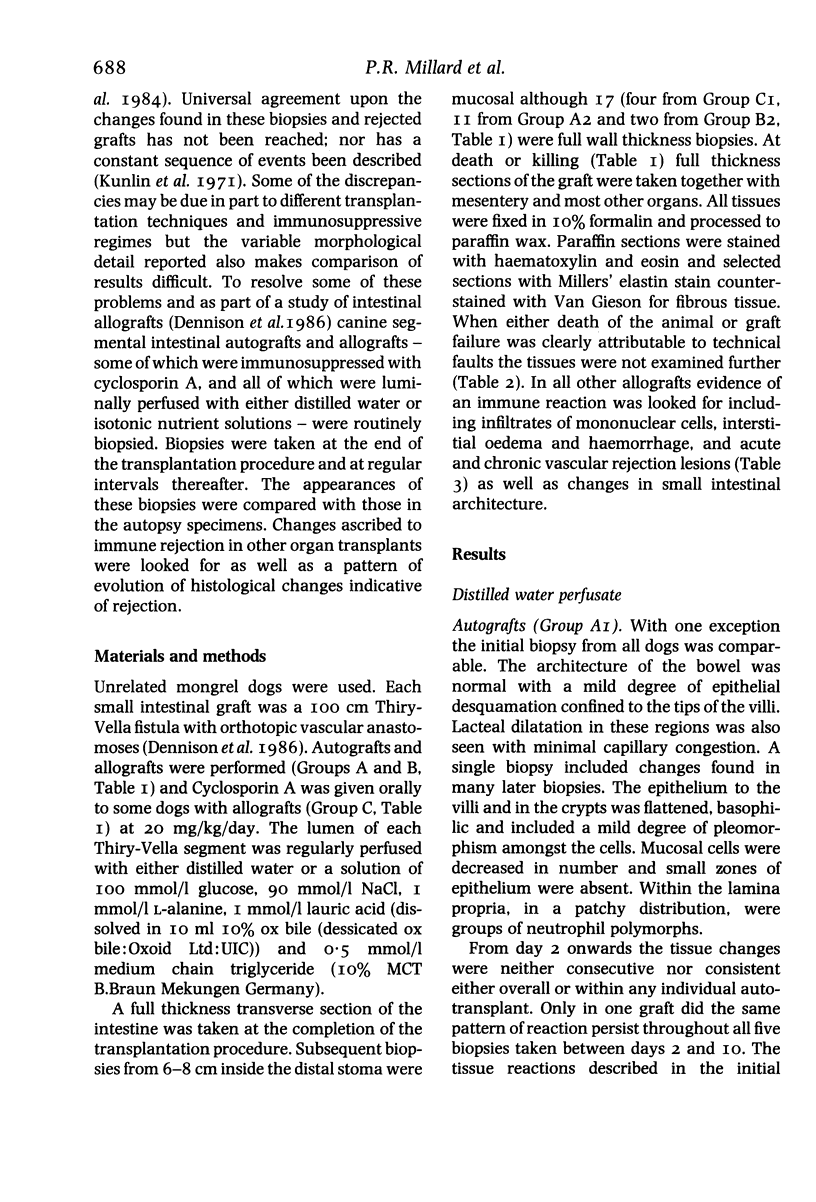
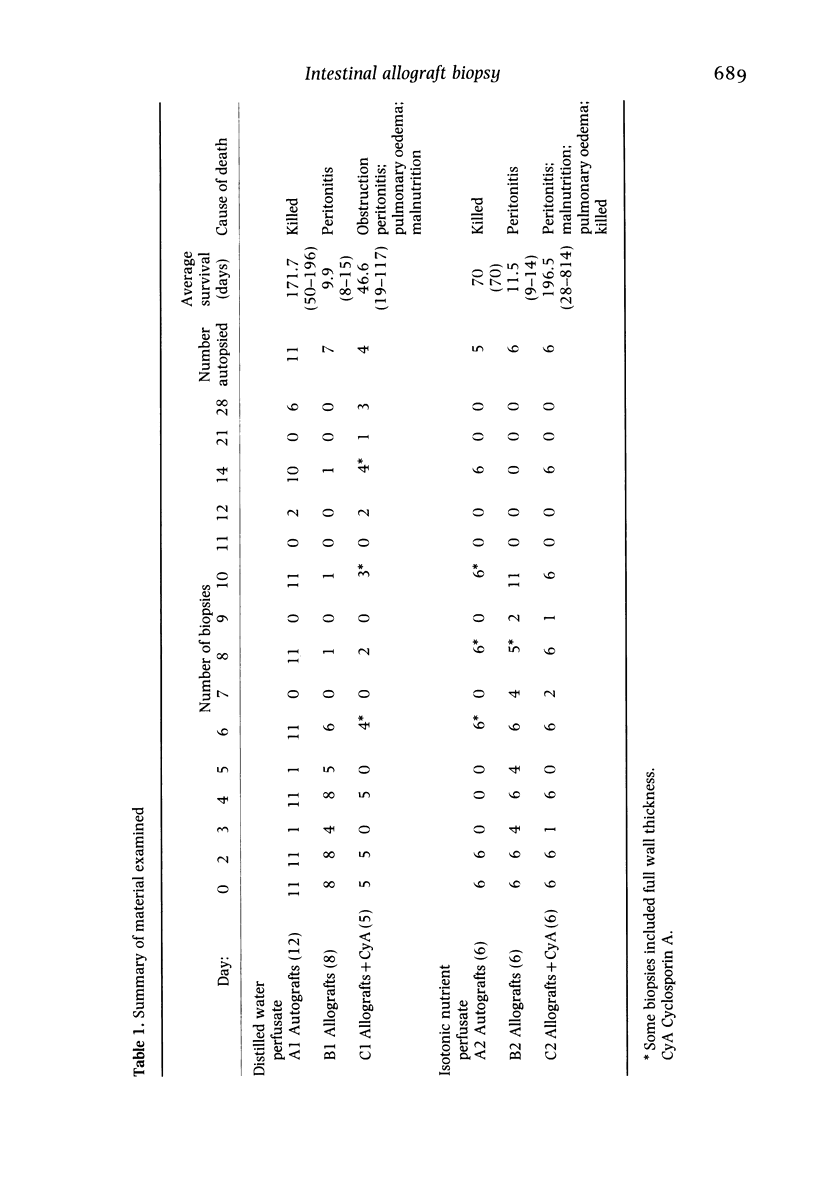
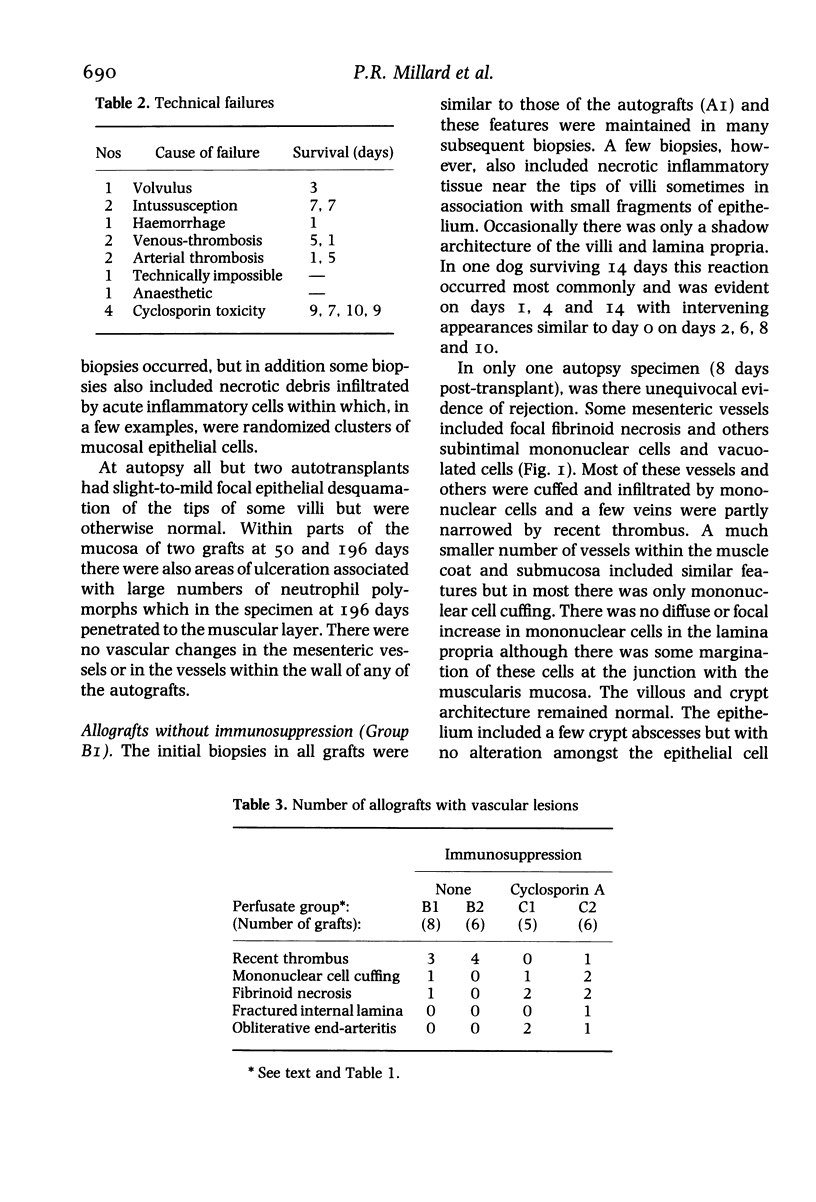
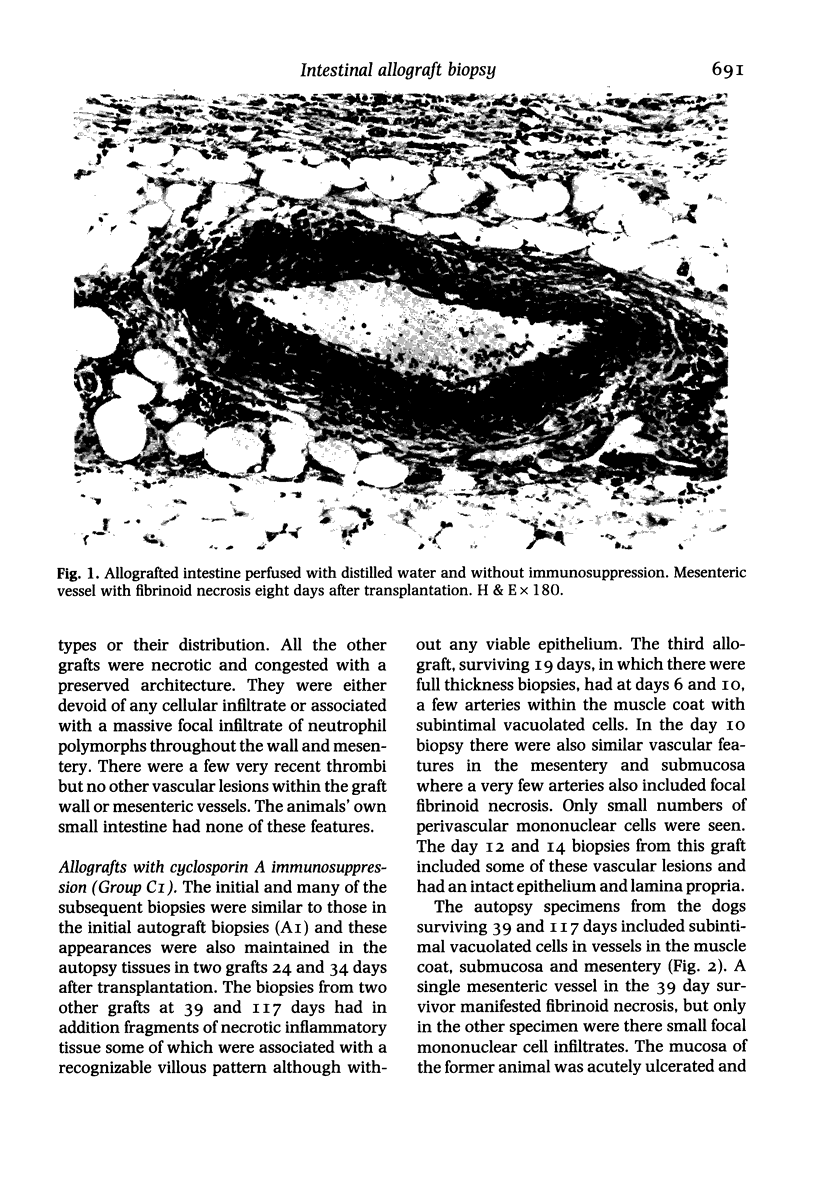
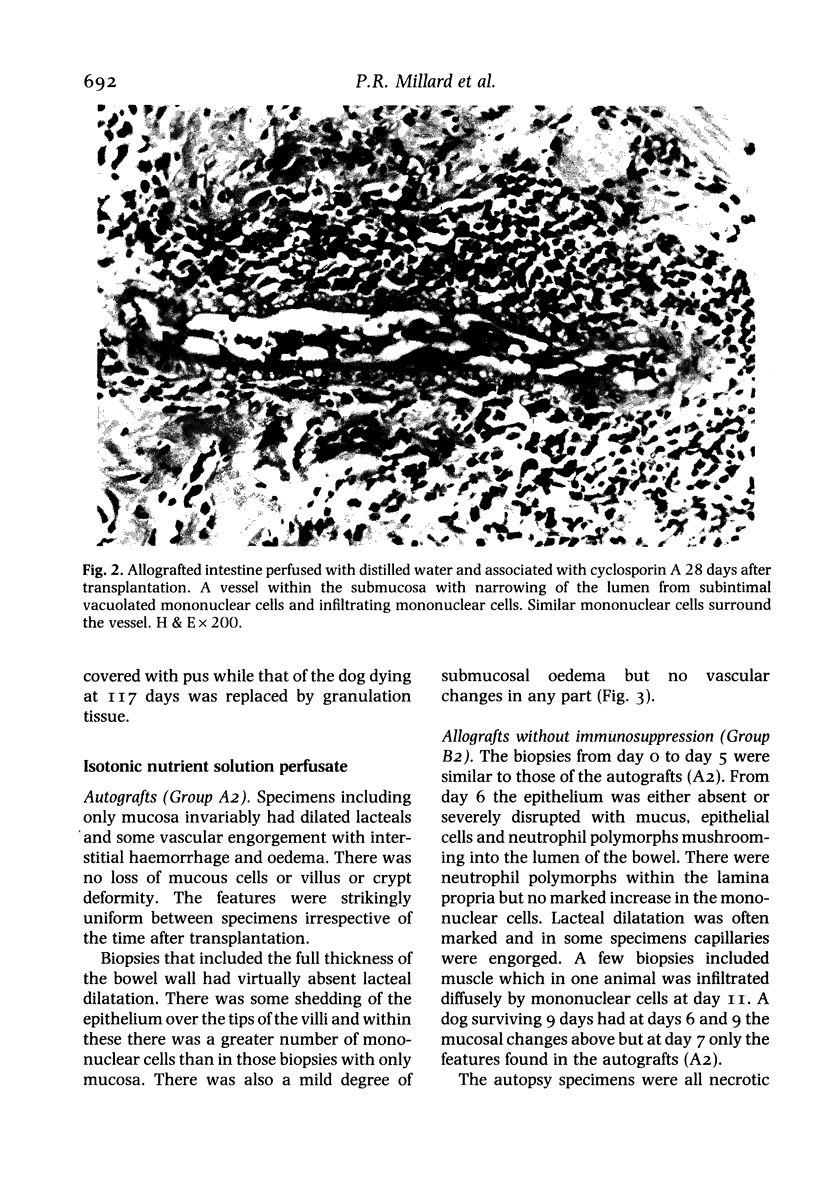
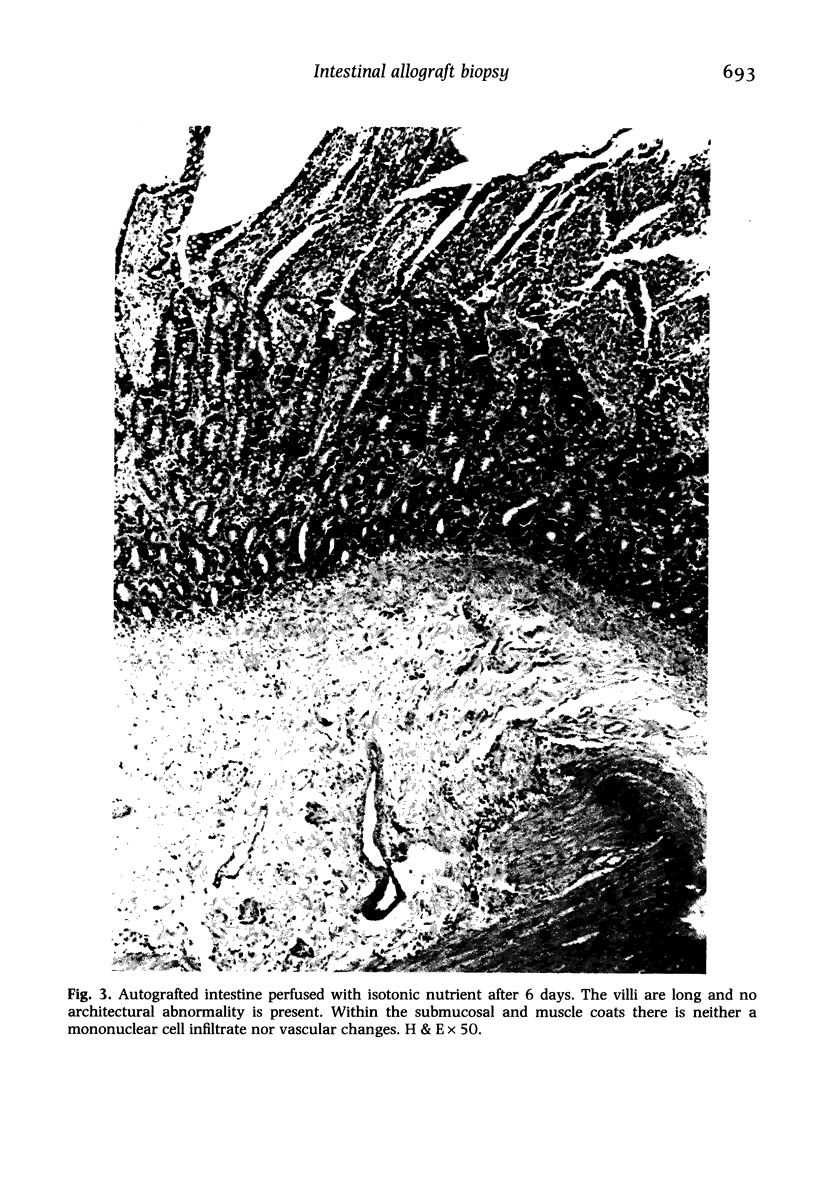
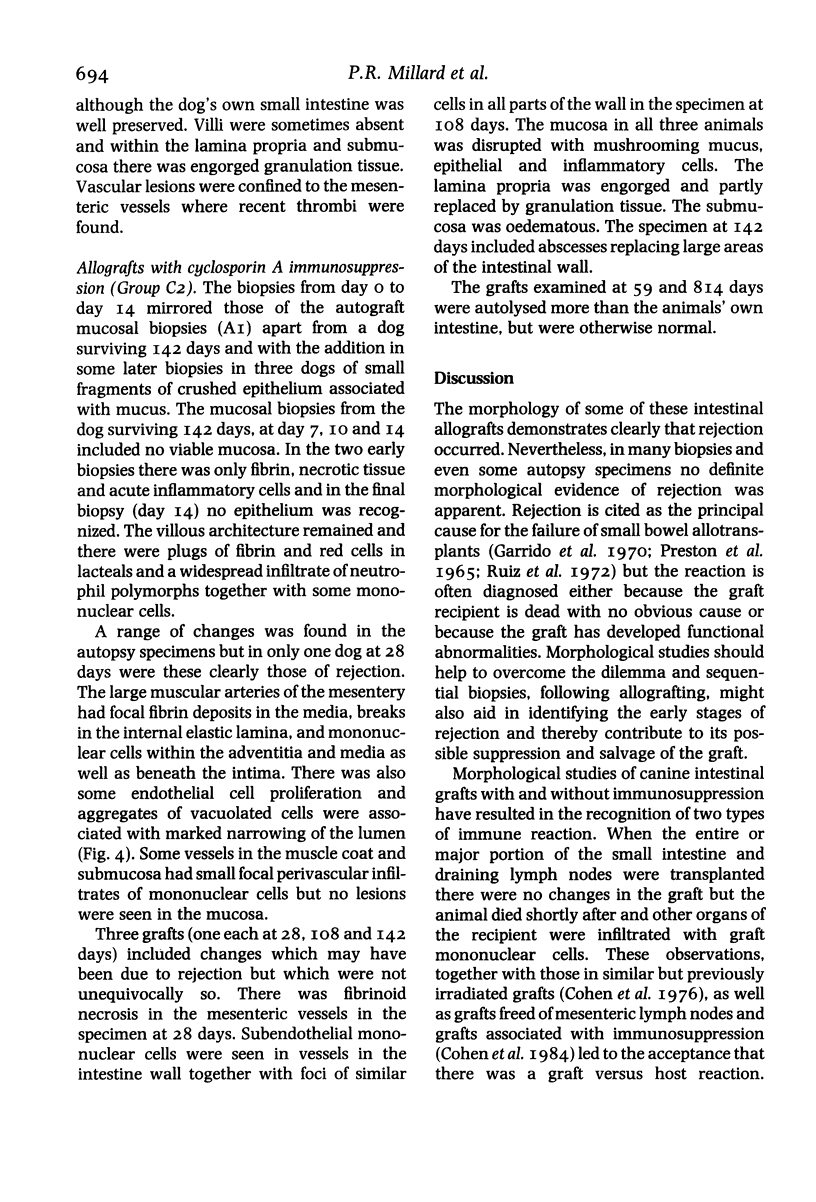
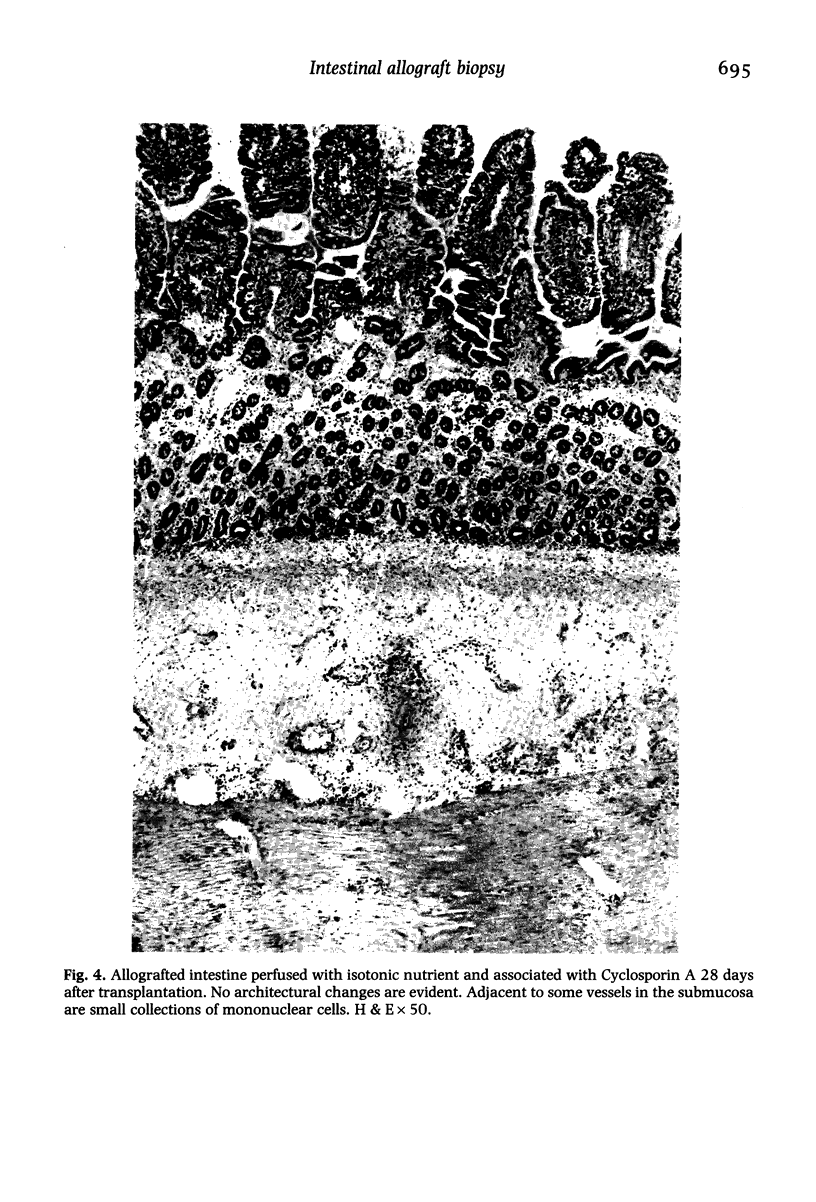
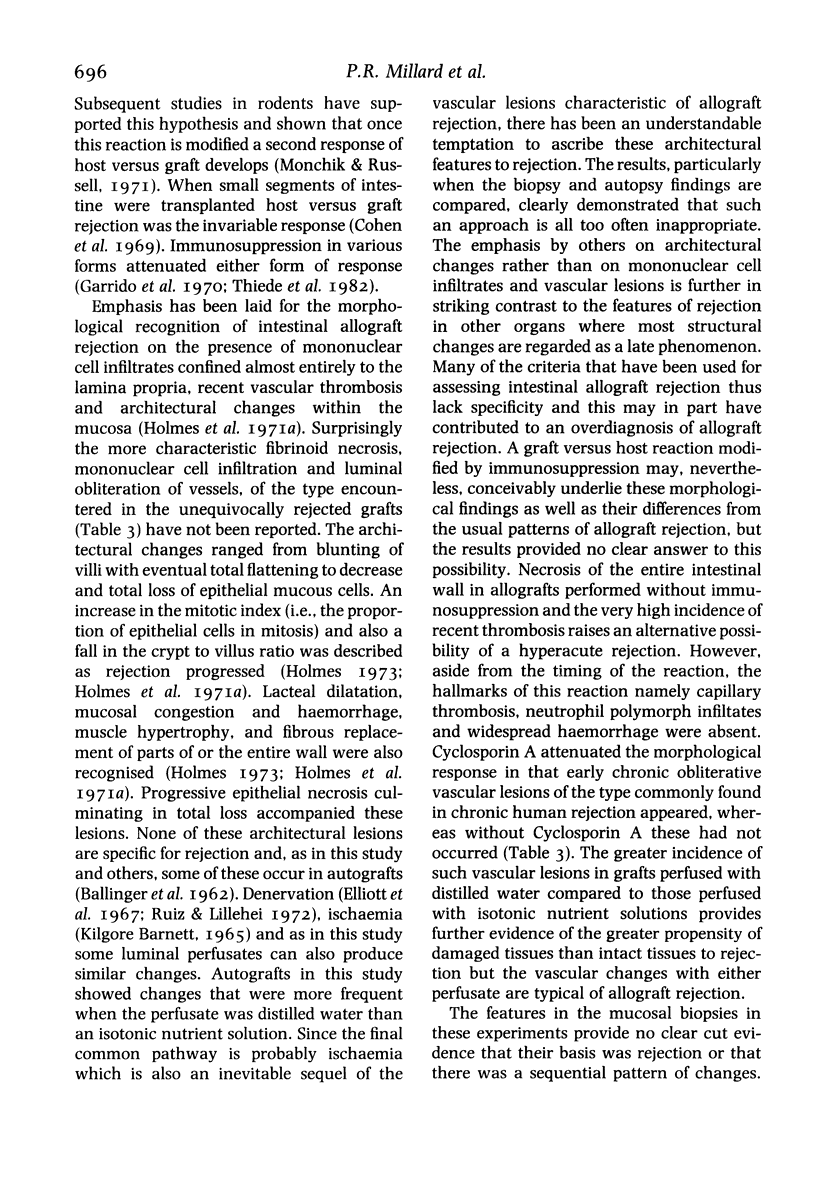
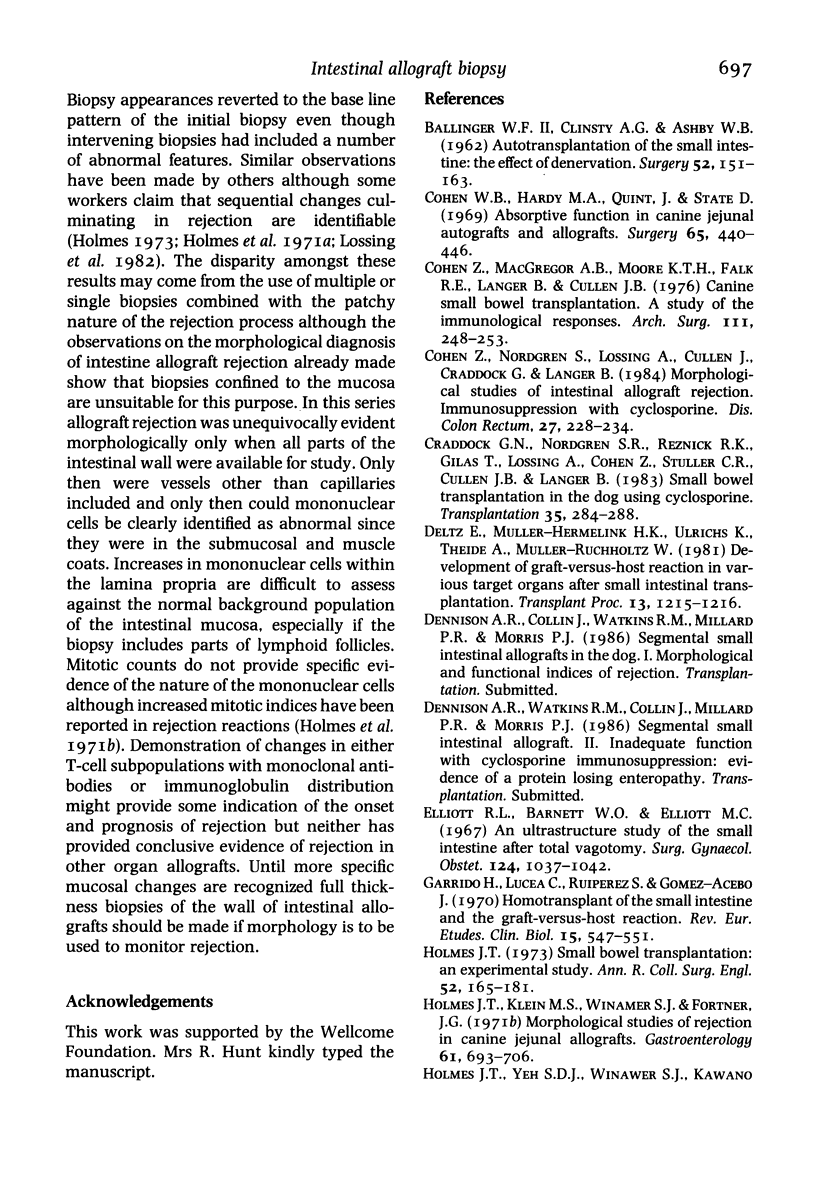
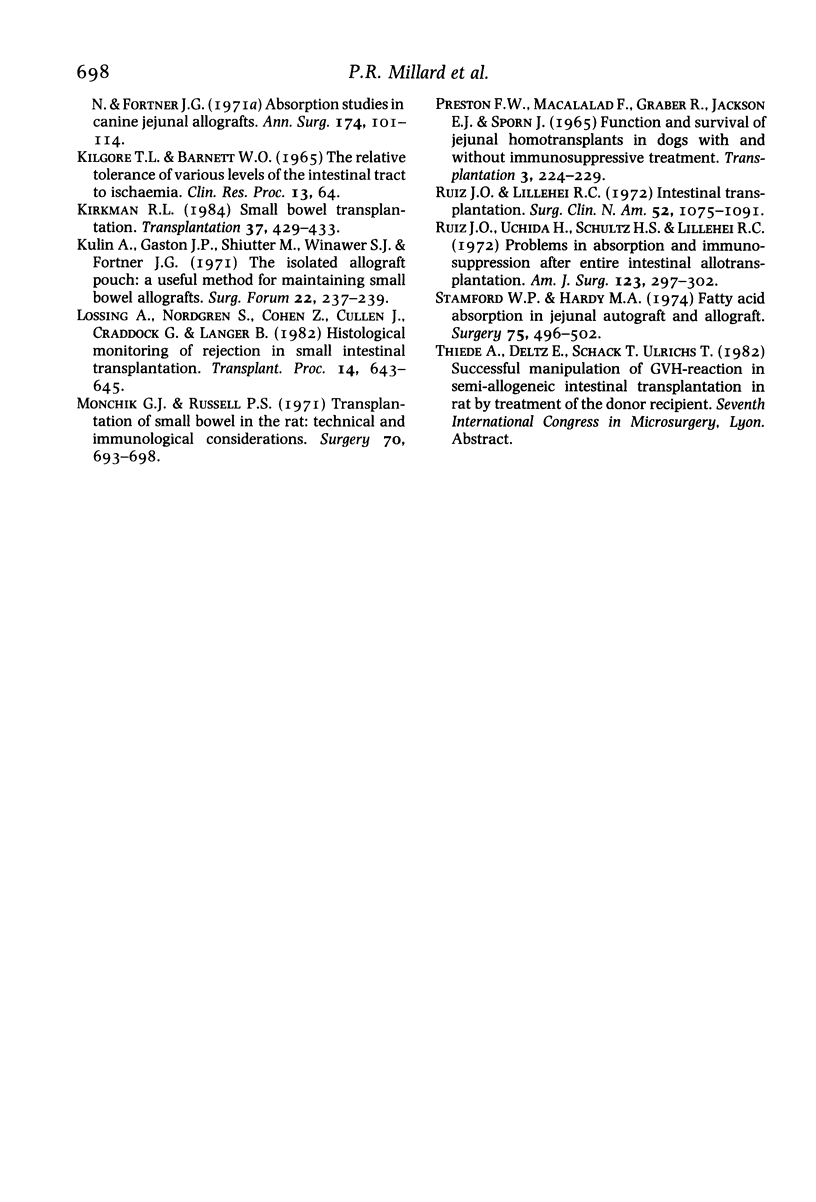
Images in this article
Selected References
These references are in PubMed. This may not be the complete list of references from this article.
- Cohen W. B., Hardy M. A., Quint J., State D. Absorptive function in canine jejunal autografts and allografts. Surgery. 1969 Mar;65(3):440–446. [PubMed] [Google Scholar]
- Cohen Z., Nordgren S., Lossing A., Cullen J., Craddock G., Langer B. Morphologic studies of intestinal allograft rejection. Immunosuppression with cyclosporine. Dis Colon Rectum. 1984 Apr;27(4):228–234. doi: 10.1007/BF02553789. [DOI] [PubMed] [Google Scholar]
- Craddock G. N., Nordgren S. R., Reznick R. K., Gilas T., Lossing A. G., Cohen Z., Stiller C. R., Cullen J. B., Langer B. Small bowel transplantation in the dog using cyclosporine. Transplantation. 1983 Apr;35(4):284–288. doi: 10.1097/00007890-198304000-00004. [DOI] [PubMed] [Google Scholar]
- Elliott R. L., Barnett W. O., Elliott M. C. An ultrastructural study of the small intestine after total vagotomy. Surg Gynecol Obstet. 1967 May;124(5):1037–1042. [PubMed] [Google Scholar]
- HARDY J. D. The university surgeon and his society: reflections and perspectives. Surgery. 1962 Jul;52:1–8. [PubMed] [Google Scholar]
- Kirkman R. L. Small bowel transplantation. Transplantation. 1984 May;37(5):429–433. doi: 10.1097/00007890-198405000-00001. [DOI] [PubMed] [Google Scholar]
- Kunlin A., Gaston J. P., Shiu M. H., Winawer S. J., Fortner J. G. The isolated allograft pouch: a useful method for monitoring small bowel allografts. Surg Forum. 1971;22:237–238. [PubMed] [Google Scholar]
- Lossing A., Nordgren S., Cohen Z., Cullen J., Craddock G., Langer B. Histologic monitoring of rejection in small intestinal transplantation. Transplant Proc. 1982 Dec;14(4):643–645. [PubMed] [Google Scholar]
- PRESTON F. W., MACALALAD F., GRABER R., JACKSON E. J., SPORN J. FUNCTION AND SURVIVAL OF JEJUNAL HOMOTRANSPLANTS IN DOGS WITH AND WITHOUT IMMUNOSUPPRESSIVE TREATMENT. Transplantation. 1965 Mar;3:224–229. doi: 10.1097/00007890-196503000-00009. [DOI] [PubMed] [Google Scholar]
- Ruiz J. O., Uchida H., Schultz L. S., Lillehei R. C. Problems in absorption and immunosuppression after entire intestinal allotransplantation. Am J Surg. 1972 Mar;123(3):297–303. doi: 10.1016/0002-9610(72)90289-9. [DOI] [PubMed] [Google Scholar]
- Stamford W. P., Hardy M. A. Fatty acid absorption in jejunal autograft and allograft. Surgery. 1974 Apr;75(4):496–502. [PubMed] [Google Scholar]





